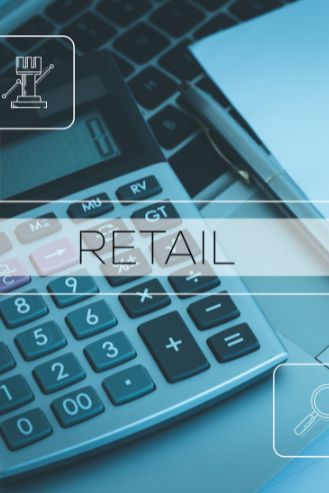
How Predictive Analytics is Transforming Retail Marketing Strategies
Predictive analytics is reshaping the retail landscape, transforming how businesses understand and respond to customer behavior. This powerful technology combines historical data, machine learning algorithms, and statistical modeling to unlock valuable insights that drive informed decision-making in retail marketing.
The impact of predictive analytics on retail strategies is profound:
- Data-Driven Customer Understanding: Retailers now predict buying patterns and preferences with unprecedented accuracy.
- Real-Time Decision Making: Automated systems adjust pricing, inventory, and marketing campaigns instantly.
- Personalized Shopping Experiences: Tailored recommendations and promotions boost customer satisfaction.
- Operational Efficiency: Smart inventory management and supply chain optimization reduce costs.
You’re witnessing a retail revolution where guesswork is replaced by precise, data-backed strategies. From small local shops to global retail giants, predictive analytics provides the tools to anticipate market changes, understand customer needs, and stay ahead of competitors. This technology isn’t just changing how retailers operate – it’s redefining what’s possible in retail marketing.
In fact, the use of AI-driven predictive analytics in retail is a testament to this revolution. With these advanced tools, retailers can leverage data not only for understanding customer behavior but also for creating massively scalable pop advertising strategies that significantly enhance customer engagement and conversion rates.

Understanding Predictive Analytics in Retail Marketing
Predictive analytics in retail marketing combines historical data, machine learning algorithms, and statistical modeling to create a powerful decision-making engine. This sophisticated system processes vast amounts of data points, including:
- Purchase histories
- Customer demographics
- Browsing patterns
- Social media interactions
- Seasonal trends
- Market conditions
The system analyzes these data points through advanced algorithms to identify patterns and correlations that humans might miss. These insights transform into actionable predictions about future customer behaviors, market trends, and business opportunities.
Retailers implementing predictive analytics gain significant competitive advantages:
- Data-Driven Decision MakingReduced guesswork in strategic planning
- Quantifiable results and ROI tracking
- Real-time adjustment capabilities
- Operational EfficiencyStreamlined inventory management
- Optimized staffing levels
- Reduced waste and carrying costs
- Enhanced Customer ExperiencePersonalized shopping journeys
- Relevant product recommendations
- Timely promotional offers
- Risk ManagementEarly warning systems for potential issues
- Fraud detection capabilities
- Market trend anticipation
The technology works by creating mathematical models that learn from past data patterns. These models continuously improve their accuracy through machine learning algorithms, adapting to new information and changing market conditions. As the system processes more data, its predictions become increasingly refined and reliable, providing retailers with a powerful tool for strategic planning and customer engagement.
An important aspect of utilizing predictive analytics is understanding how to effectively measure the impact of various marketing touchpoints on customer behavior. This is where multi-touch attribution models come into play, allowing retailers to better allocate their marketing resources based on comprehensive data analysis.
Key Applications of Predictive Analytics in Retail Marketing Strategies
Predictive analytics empowers retailers with data-driven insights to make strategic decisions across various operational aspects. Let’s explore how demand forecasting revolutionizes inventory optimization in retail environments.
1. Demand Forecasting for Inventory Optimization
Accurate demand forecasting helps retailers maintain optimal inventory levels through sophisticated data analysis and pattern recognition. This critical application of predictive analytics transforms raw data into actionable insights for inventory management.
Key Components of Demand Forecasting:
- Historical Sales Analysis: Examining past sales patterns across different timeframes
- Seasonal Trend Detection: Identifying cyclical patterns and seasonal fluctuations
- Market Variable Integration: Incorporating external factors like weather, local events, and economic indicators
- Real-time Data Processing: Analyzing current market conditions and consumer behavior
Demand forecasting algorithms process these components to generate accurate predictions, helping retailers:
- Reduce storage costs by maintaining optimal stock levels
- Minimize product wastage, particularly for perishable items
- Prevent stockouts during peak demand periods
- Allocate resources efficiently across different store locations
Advanced Forecasting Techniques:
- Machine Learning Models: Utilize neural networks to identify complex patterns in consumer behavior
- Time Series Analysis: Track historical data points to predict future demand curves
- Regression Analysis: Determine relationships between various factors affecting product demand
The implementation of demand forecasting systems has shown remarkable results:
“Retailers using predictive analytics for demand forecasting report up to 30% reduction in inventory costs and a 20% decrease in out-of-stock situations.”
Smart inventory optimization through predictive analytics enables retailers to:
- Automate Reordering: Set up intelligent triggers for inventory replenishment
- Optimize Warehouse Space: Arrange products based on predicted demand patterns
- Improve Cash Flow: Reduce capital tied up in excess inventory
- Enhance Customer Satisfaction: Ensure product availability when customers need it
2. Enhancing Customer Engagement with Personalized Marketing Campaigns
Predictive analytics transforms generic marketing approaches into highly targeted, personalized campaigns that resonate with individual customers. By analyzing historical purchase data, browsing patterns, and demographic information, retailers can create precise customer segments and deliver tailored marketing messages.
Key Components of Personalized Marketing:
- Product Recommendations: AI-powered algorithms suggest items based on past purchases and browsing history
- Timing Optimization: Sending marketing messages when customers are most likely to engage
- Channel Preference: Identifying preferred communication channels for each customer
- Content Customization: Adapting message content to match individual interests
Real-Time Personalization Examples:
- Dynamic email content that changes based on customer behavior
- Mobile app notifications featuring relevant product suggestions
- Website content adaptation showing personalized homepage layouts
- Social media ads targeted to specific customer segments
Retailers implementing personalized marketing campaigns through predictive analytics typically see:
- 20-30% increase in conversion rates
- 40% higher customer engagement levels
- 25% growth in average order value
- 15% reduction in customer acquisition costs
Successful personalization requires continuous data collection and analysis to refine targeting strategies. Advanced machine learning models help identify patterns in customer behavior, enabling retailers to anticipate needs and preferences before customers express them explicitly.
3. Maximizing Revenue Potential through Dynamic Pricing Strategies
Dynamic pricing is a game-changing strategy in retail marketing. It allows businesses to adjust prices in real-time based on market demand, competitor behavior, and customer purchasing patterns. With the help of predictive analytics, retailers can implement sophisticated pricing models that maximize revenue while keeping customers satisfied.
Key Benefits of Dynamic Pricing:
- Competitive Edge: Real-time price adjustments help retailers stay competitive without sacrificing profit margins
- Inventory Management: Strategic price changes can accelerate sales of slow-moving items or maximize profits during peak demand
- Revenue Optimization: AI-driven algorithms identify optimal price points across different market segments
- Customer Value Perception: Smart pricing strategies enhance perceived value while maintaining profitability
Retailers can use predictive analytics to:
- Track competitor pricing changes automatically
- Analyze historical sales data for seasonal pricing trends
- Identify price elasticity across different product categories
- Determine optimal discount timing and depth
Real-World Application: Amazon updates prices every 10 minutes using predictive algorithms that analyze competitor prices, product demand, and customer behavior patterns. This approach has helped them achieve up to 25% higher profit margins compared to traditional fixed pricing models.
Advanced predictive models can also consider factors such as:
- Weather patterns affecting buying behavior
- Local events impacting demand
- Social media sentiment
- Economic indicators
- Supply chain costs
4. Retaining Customers by Identifying Churn Risks Early On
Customer churn prediction algorithms are powerful tools for retail businesses to find early signs of customer disengagement. These models look at various behavior patterns:
- Changes in how often customers make purchases
- Decreased interest in marketing communications
- Fewer visits to the website or app usage
- Rates of cart abandonment
- Patterns in customer service interactions
Machine learning algorithms analyze this data to give each customer a risk score, allowing retailers to use specific strategies to keep them from leaving. For example, they might send personalized offers to customers who are at high risk of leaving or reach out to them proactively through customer service.
Key indicators of potential churn:
- Decreased purchase frequency
- Lower average transaction values
- Reduced loyalty program participation
- Negative customer feedback
- Extended periods of inactivity
Retailers can use these insights through automated response systems that trigger specific actions based on risk levels:
Risk Level 1: Personalized product recommendations
Risk Level 2: Special discounts or loyalty rewards
Risk Level 3: Direct customer service intervention
Risk Level 4: Premium retention offers
Companies that use churn prediction models usually see a 20-30% decrease in the number of customers who leave. The secret is combining predictive analytics with quick response mechanisms to solve customer problems before they lead to lost business.
5. Optimizing Supply Chain Operations with Predictive Insights
Predictive analytics is changing the game for supply chain operations by turning raw data into useful information. Here’s how you can use these powerful tools to improve your supply chain:
1. Streamline Inventory Distribution
- Predict regional demand patterns
- Optimize warehouse locations
- Balance stock levels across distribution centers
2. Reduce Transportation Costs
- Calculate optimal delivery routes
- Predict fuel consumption patterns
- Identify cost-effective shipping methods
With real-time data analysis, you can stay one step ahead and prevent supply chain disruptions before they happen. Machine learning algorithms can spot patterns in:
- Weather conditions affecting shipping routes
- Political events impacting international trade
- Market fluctuations affecting supplier reliability
- Production delays at manufacturing facilities
Smart Supply Chain Integration connects all the key players in your supply chain:
- Suppliers
- Warehouses
- Distribution centers
- Retail locations
This integration creates a synchronized network that responds to changes instantly. You’ll be able to identify potential bottlenecks, pinpoint inefficient processes, and implement solutions proactively.
Advanced predictive models help you maintain optimal inventory levels by analyzing:
- Historical sales data
- Seasonal trends
- Market conditions
- Supplier performance metrics
These insights enable automated reordering systems that maintain stock levels without human intervention, reducing carrying costs and preventing stockouts simultaneously.
Emerging Trends and Advanced Techniques in Predictive Analytics for Retail Marketing Strategies
The retail industry is experiencing significant advancements in predictive analytics, thanks to technological innovations and evolving consumer expectations. Here are some key trends that are reshaping how retailers use data to make decisions:
1. Sustainability-Focused Analytics
- Carbon footprint prediction models
- Waste reduction algorithms
- Green consumer behavior tracking
- Sustainable supply chain optimization
2. Hyper-Personalized Experiences
- Real-time behavior analysis
- Location-based micro-targeting
- Individual preference mapping
- Dynamic content adaptation
These changes are powered by advanced techniques such as:
1. Machine Learning Models
- Deep Neural Networks for complex pattern recognition
- Natural Language Processing for social sentiment analysis
- Computer Vision for in-store behavior tracking
- Reinforcement Learning for dynamic optimization
2. Advanced Data Processing
- Edge Computing for real-time analysis
- Federated Learning for privacy-preserving analytics
- AutoML for automated model development
- Transfer Learning for improved accuracy
The integration of Internet of Things (IoT) devices has enabled retailers to collect unprecedented amounts of data. Smart shelves track inventory levels in real-time, while facial recognition systems analyze customer engagement patterns. These technologies, combined with advanced predictive models, create a powerful ecosystem for precise decision-making.
Retailers are also exploring quantum computing applications for complex optimization problems. This emerging technology promises to revolutionize demand forecasting and supply chain management by processing vast amounts of data at unprecedented speeds.
The adoption of blockchain technology in predictive analytics ensures data transparency and security. This innovation helps retailers build trust with consumers while maintaining accurate predictive models based on verified data sources.
Real-World Examples and Implementation Challenges in Utilizing Predictive Analytics for Retail Marketing Success
Target’s Geo-Tracking Success Story
Target implemented a sophisticated geo-tracking system that analyzed customer movement patterns within stores. By tracking smartphone signals, they identified shopping behaviors and optimized store layouts. This resulted in a 15% increase in customer engagement and a 23% boost in sales for repositioned products.
Implementation Challenges
Data Quality and Integration Issues
- Incomplete or inconsistent data across multiple systems
- Legacy infrastructure limitations
- Data silos preventing unified analysis
- Varying data formats requiring standardization
Resource Constraints
- High costs of predictive analytics tools
- Limited access to skilled data scientists
- Training requirements for existing staff
- Hardware and software infrastructure expenses
Solutions and Best Practices
Data Management
- Implement robust data cleaning protocols
- Establish standardized data collection methods
- Create unified data warehouses
- Regular data quality audits
Resource Optimization
- Start with small-scale pilot projects
- Partner with analytics service providers
- Invest in automated analytics tools
- Develop internal training programs
Walmart’s Inventory Management Case Study
Walmart’s predictive analytics system processes over 1 million customer transactions per hour. Their demand forecasting model reduced out-of-stock items by 16% during peak shopping periods. The system analyzes weather patterns, local events, and historical sales data to adjust inventory levels automatically.
Key Success Factors
- Phased implementation approach
- Clear communication across departments
- Regular system performance reviews
- Continuous model refinement based on results
Conclusion
Predictive Analytics for Retail Marketing has changed the way businesses connect with customers and improve their operations. By using data-driven insights, retailers can:
- Make decisions based on facts instead of guessing
- Understand what customers want before they even ask
- Create personalized shopping experiences for each individual
- Adjust inventory and pricing on the spot
But it’s not just about making more sales right now. These precise targeting techniques also give retailers a long-term advantage over their competitors in the digital world. Those who use predictive analytics will be leading the way in innovation, ready to adapt to shifts in consumer behavior and market trends.
The future of retail belongs to organizations that harness the power of predictive analytics to transform raw data into actionable insights. As technology continues to evolve, the possibilities for data-driven retail strategies will expand, offering even more sophisticated ways to understand and serve customers while maximizing operational efficiency and profitability.


